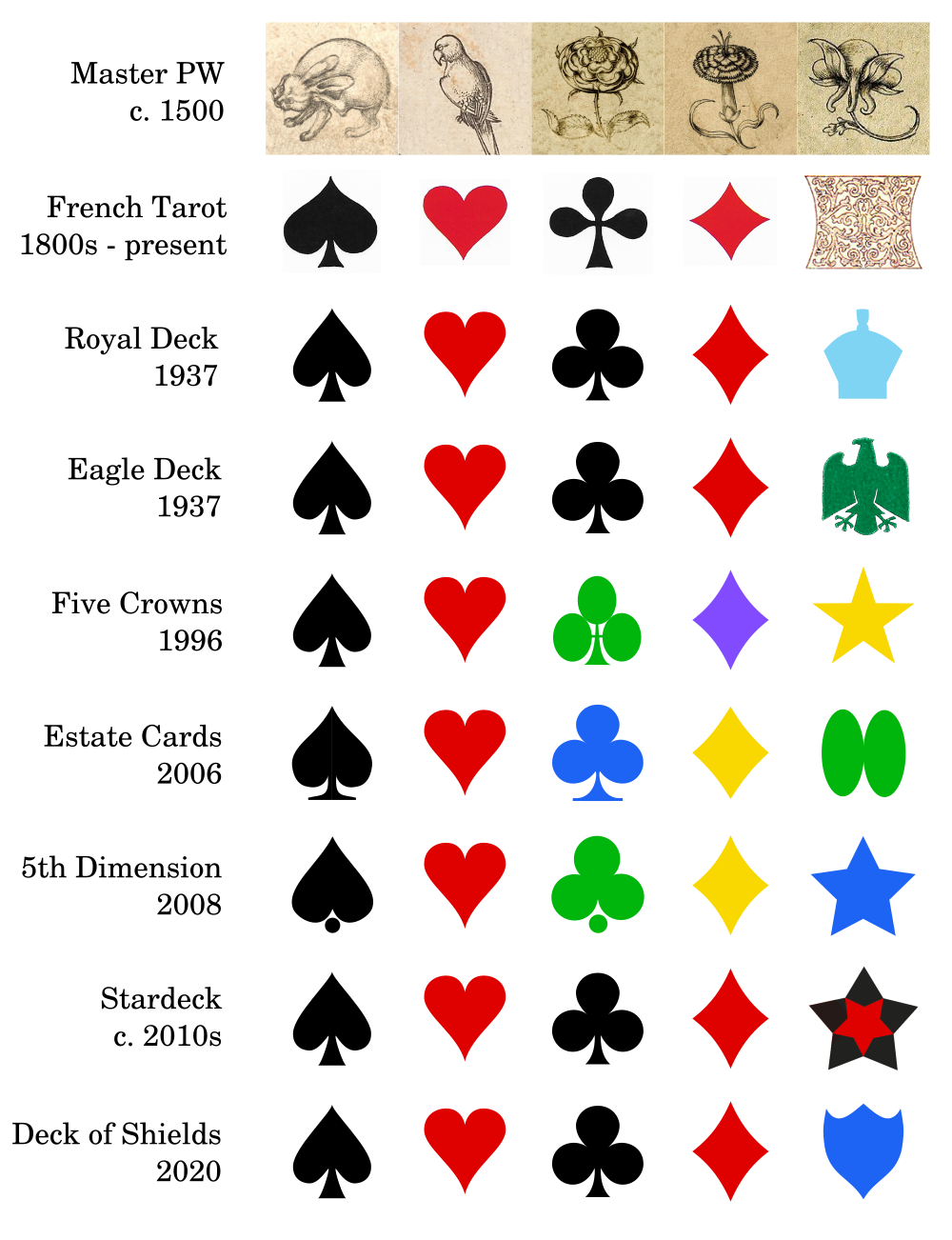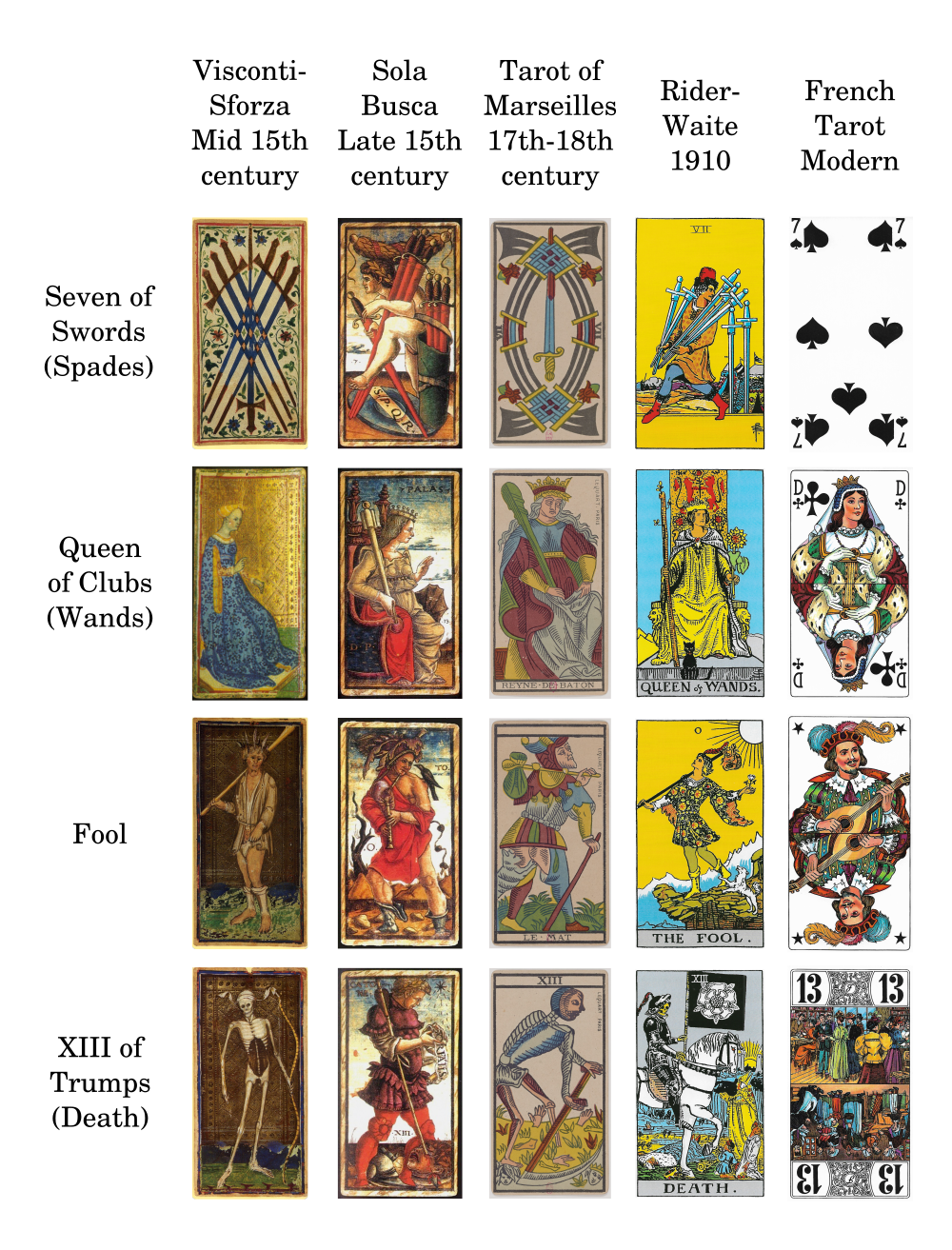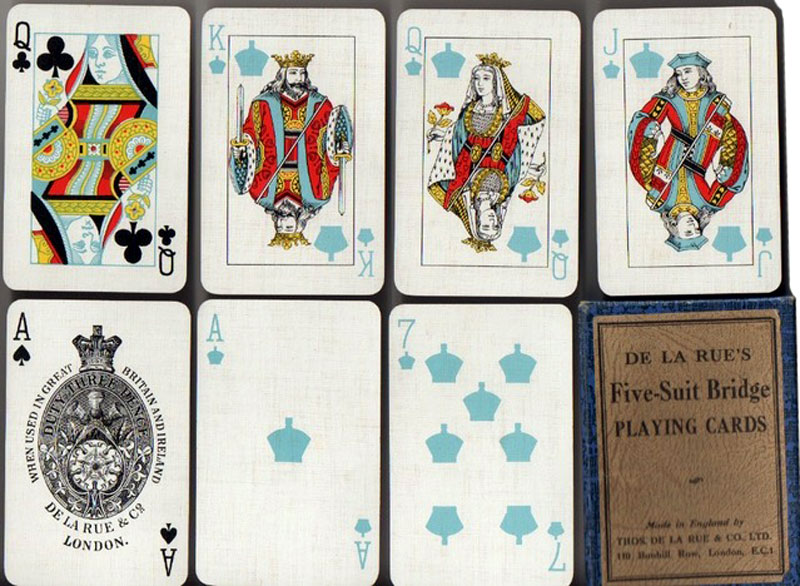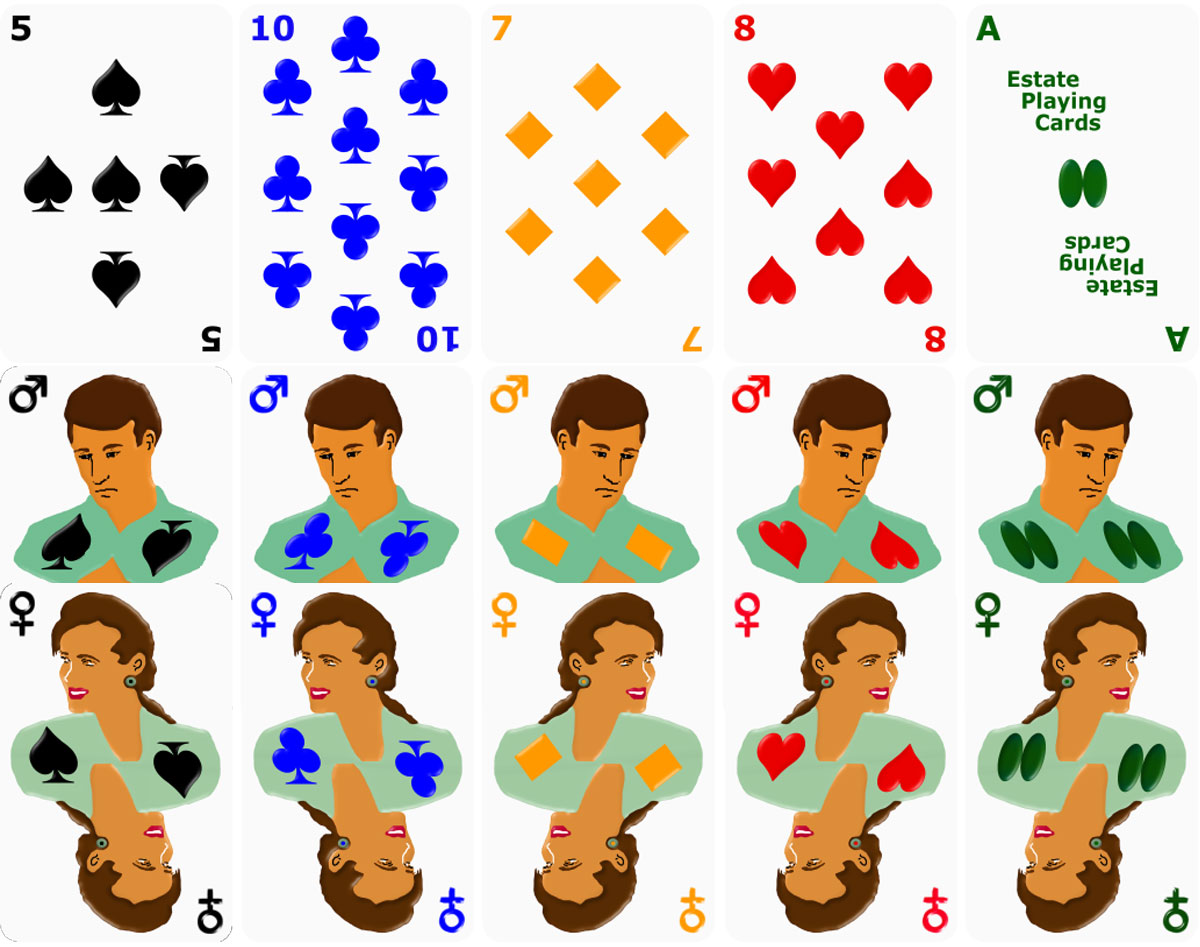Decks of playing cards with five suits have existed for more than 500 years. Here is a chart illustrating the suit symbols of several five suit decks, followed by a description of each.

Master PW Deck

This deck of round playing cards in five suits was created in Cologne circa 1500 by a master designer known only by the initials “PW.” The suits are hares, parrots, roses, carnations, and columbines. Each suit has ten pip cards and four court cards: King, Queen, Ober, and Unter. The court cards of each suit are represented by royalty of different nationalities. The hares are Turks, the parrots Moors, the roses English, the carnations Germans, and the columbines Spaniards. There is also a title card and a memento mori card, for a total of 72 cards in the deck.
Tarot Decks

Though many people today are only acquainted with Tarot decks through their use in fortune telling, Tarot cards were invented for playing games. The game of Tarot, also known as Trionfi (triumphs), Tarocchi, or Tarock, has been played from the 15th century to the present day. It is now one of the most popular card games in France, second only to Belote.
Tarot decks have five suits: four traditional suits and a suit of trumps or triumphs. Tarot developed in Italy, and many decks include the four Italian suits of cups, coins, clubs or wands, and swords. In the most common type of Tarot deck, the four regular suits include 1 through 10, Jack, Knight, Queen, and King. The trump suit is numbered 1 through 21, with an additional card known as the Fool, sometimes numbered zero. There are 78 cards in total. Originally, each card in the suit of trumps was decorated with a symbolic image. These included figures such as the Sun, the Moon, Death, and Fortune. A variation known as Minchiate had an expanded trump suit that included the zodiac signs, the four virtues, and the four elements.
In the 16th century, Tarot cards began to be used in a storytelling game called Tarocchi Appropriati, in which players compared each other to cards from the trump suit in a poetic fashion. In the 18th century, the cards took on a mystical meaning for some, and began to be used for cartomancy. Occultists named the trump suit the Major Arcana, referring to the four regular suits as the Minor Arcana.
Meanwhile, the game of Tarot continued to be played. In the 19th century, the Tarot Nouveau deck was developed in France. The allegorical symbols of the trump suit were dropped in favor of scenes depicting groups of people engaged mainly in leisure activities. The French suits of spades, hearts, clubs and diamonds were used, and the trump suit was decorated with an ornate black and white pattern. This is the deck most commonly used for playing French Tarot today.
Royal Deck

Contract bridge was invented on October 31, 1925, by Harold Stirling Vanderbilt, who made changes to the game of auction bridge. For the next few decades, bridge would become tremendously popular. In 1937, Walter Marseille and Paul Stern published rules for bridge with five suits. A London company began selling Royal decks with a fifth suit of blue crowns. With the addition of a complete fifth suit, the deck contained 65 cards.
Eagle Deck

The Eagle deck was published in the United States shortly after the Royal deck. It also had 65 cards due to the addition of a complete fifth suit of green Eagles. By 1939, the brief fad of playing bridge with a five-suit deck had come to an end. Contract bridge is already an intricate game, and the added complexity of a fifth suit did not have staying power.
Five Crowns

Five Crowns is a card game published by Set Enterprises. There are five suits of 11 cards each, with pip cards from 3 to 10, Jack, Queen, and King. There are no Aces or Twos. Three Jokers are included in each 58-card deck, and the game is packaged with two decks. The game play is very similar to Three Thirteen, a variation of Rummy. Each of the traditional suits has a different color, and Stars is the fifth suit.
Estate Cards

Estate Playing Cards are a unique deck. The suits represent a modern interpretation of the ancient estates of the realm: Hearts represent the Church, Spades the Military, Diamonds Corporations, and Clubs Community. The fifth suit is the suit of Waves, representing the fifth estate of the Media. The waves are a symbol of radio or television transmission waves. The card values include Ace through 10, plus Man and Woman. There are two Imperial cards: the President and the Pope, for a total of 62 cards.
5th Dimension
/pic930222.png)
The 5th Dimension deck (stylized as 5° Dimension) has a fifth suit of Stars. The suit values include the Ace, a 1 card separate from the Ace, 2 through 10, Jack, Princess, Queen, and King. There is also a Joker for each suit, for a total of 80 cards in the deck.
Stardeck
/pic43713.jpg)
The Stardeck adds a fifth suit of Stars to the traditional 52-card deck. The Stars suit is both red and black. The deck contains 5 suits of 13 cards each, plus two Jokers, for a total of 67 cards in the deck. The Stardeck was published in the 2010s but is currently out of print.
Deck of Shields

I designed the Deck of Shields because I wanted to play cards with a deck of five suits and there were none currently being produced. I have made it available for purchase for anyone else who would like to play cards with five suits. I included only the usual rankings of Ace through King, and added a complete fifth suit of Shields, which are blue. There are also two Jokers and three instruction cards, for a 70-card deck. The cards are available for purchase.